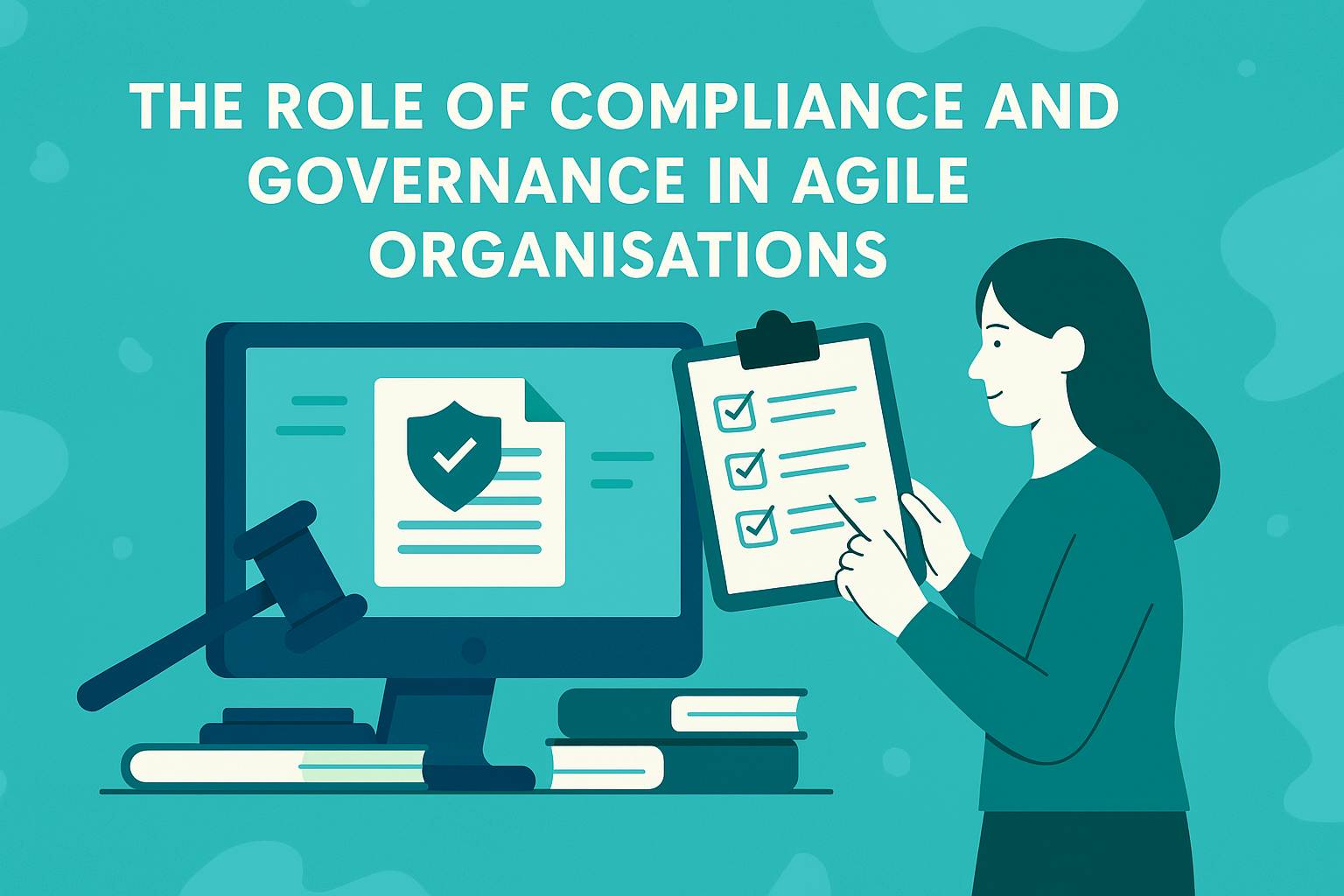The Role of Compliance and Governance in Agile Organisations

Agile and governance. For many, these words feel fundamentally at odds - one speaks to speed and autonomy, the other to control and assurance. It’s a false dichotomy, and one that can quietly sabotage the agility we’re trying to cultivate.
The truth is, compliance and governance don’t need to be the enemies of agility. In fact, when approached with intent and clarity, they enable agility - by reducing uncertainty, providing guardrails, and fostering trust across the organisation.
It’s time to stop treating governance as a burden to be minimised, and instead start designing it as a strategic enabler of fast, safe, and sustainable delivery.
Governance: Not Control, But Confidence
At its core, governance is about making sure we’re doing the right things, in the right way, for the right reasons. It gives leaders confidence that risks are understood, that teams are operating ethically and effectively, and that the organisation is in control even while teams are empowered.
In agile organisations, this confidence shouldn’t come from heavyweight stage gates, siloed approvals, or post-hoc audits. It should be built in - through clear principles, transparent processes, and visible, automated evidence.
When governance becomes part of the system - rather than an interruption to it - it unlocks faster decision-making, more consistent standards, and greater trust between teams and leadership.
Compliance in a Complex, Regulated World
For organisations operating in regulated industries - finance, utilities, health, government - compliance is not optional. It’s table stakes. But in many legacy organisations, compliance processes are reactive, manual, and disconnected from the way teams work.
This leads to friction. Agile teams want to experiment, move quickly, and deliver iteratively. Compliance wants to ensure security, privacy, safety, and legal requirements are being met. Without a common language or shared understanding, the result is tension and delays.
The solution isn’t to sideline compliance - it’s to embed it. To bring compliance professionals into the product development lifecycle. To shift left on governance concerns. And to use automation, observability, and traceability to prove that good governance is happening by design, not just by inspection.
Rethinking Governance for Agility
To align compliance and agility, we need to move from ceremony to clarity. Governance should be lightweight but effective - focused less on documentation, more on intent, outcomes, and traceable behaviours.
Here are some design principles for agile-compatible governance:
Principle-Driven Over Rule-Based
Instead of rigid rules for every scenario, define clear principles - secure by default, least privilege access, customer-first design - that teams can interpret and apply.Governance as Code
Use automation to enforce policies in pipelines, infrastructure, and environments. Automated security checks, audit logging, policy-as-code - all of these create confidence without slowing teams down.Shift Left and Integrate Early
Bring risk, compliance, and legal partners into early discovery and design discussions. The earlier they’re involved, the better the trade-offs and the fewer the reworks.Continuous, Not Periodic Assurance
Move away from annual audits and toward continuous evidence generation - via automated testing, observability, and real-time metrics that show how controls are working.Federated Ownership
Empower teams to own their compliance posture - with clear responsibilities, training, and support from enabling teams. Central functions should coach, not control.
Governance is a Leadership Lever
Governance isn’t just a set of processes - it’s a signal. It tells your teams what matters. It tells your stakeholders how you manage risk. And it tells your customers what kind of organisation you are.
In agile organisations, governance must evolve from a back-office function to a frontline enabler of delivery. It should illuminate blind spots, not create bottlenecks. It should accelerate decision-making by providing clarity, not slow it down through ambiguity.
Engineering leaders have a key role to play here - bridging the gap between delivery and assurance, between speed and safety. It’s not enough to optimise for throughput; we must also ensure that what we’re delivering is right, responsible, and resilient.
The Payoff
When governance and compliance are designed with agility in mind, they drive better outcomes across the board:
Faster Time-to-Value: Because teams aren’t held up by last-minute compliance hurdles.
Reduced Risk: Because risks are addressed early, not deferred until later.
Greater Autonomy: Because teams understand their boundaries and operate confidently within them.
Stronger Trust: From regulators, customers, and internal stakeholders alike.
In Closing
Agile isn’t an excuse to ignore governance. And governance doesn’t have to be a drag on agility. When done right, they’re two sides of the same coin - helping organisations move fast and responsibly.
The challenge isn’t choosing between the two. It’s designing a system where they strengthen each other.
And that’s a challenge well worth solving.
Engineering leader blending strategy, culture, and craft to build high-performing teams and future-ready platforms. I drive transformation through autonomy, continuous improvement, and data-driven excellence - creating environments where people thrive, innovation flourishes, and outcomes matter. Passionate about empowering others and reshaping engineering for impact at scale. Let’s build better, together.
